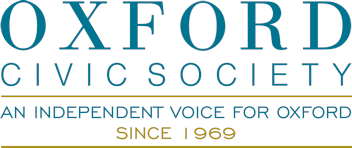Museum of Oxford
Oxford Museum's future has been secured
16 May 2012
Since 2009, the Society has been involved in plans to avoid the closure of the Museum through the participation of our volunteer helpers, and through our representation on the Project Development Planning Group of the City Council, which has been steering this work with the help of leading consultants.
The Museum of Oxford opened in 1975 with a fascinating display of objects illustrating the history and development of the city and the university within it. With little spent on its modernisation or improvement, it had recently come to look a little tired. In 2009, the City Council, who had been spending around £200,000 per year on its running costs, proposed its closure as an economy measure and part of a cost-cutting exercise to rearrange the council’s office spaces more efficiently.
The closure was vigorously opposed by Oxford Civic Society, who took the lead, with valuable support from the local press, in pointing out the unique contribution the Museum made to an understanding of the city’s and university’s development; the service it offered to visitors and tourists; and the richness of the educational programmes provided for Oxfordshire schools. Meetings were held, councillors and officers lobbied, and a rota of volunteer helpers organised to keep the Museum open at reduced cost.
As a result, the Museum now has a new future as part of the plans to achieve a modernised, more welcoming and user-friendly Town Hall, to which it is hoped that the citizens of Oxford will be more frequent visitors, and feel a greater sense of involvement. Notably:
- in June 2012, the first phase of the redevelopment opened in two rooms accessed directly from the main Town Hall lobby instead of a separate entrance
- the shop has been greatly improved and extended in the main corridor leading to an improved café with longer opening hours and the exhibition gallery beyond
- the education area has been re-sited with extended and improved facilities
- funding has so far been provided from the city’s Town Hall modernisation budget, and from two successful grant applications totalling nearly £100,000. This has enabled an exciting new presentation of a selection of the available objects, with emphasis on how they illustrate the life and expansion of the city from Roman times to the present day
- what is at present on view is hoped to be a taster of the further expansion of the revitalised Museum, which must await the success of more major grant applications

